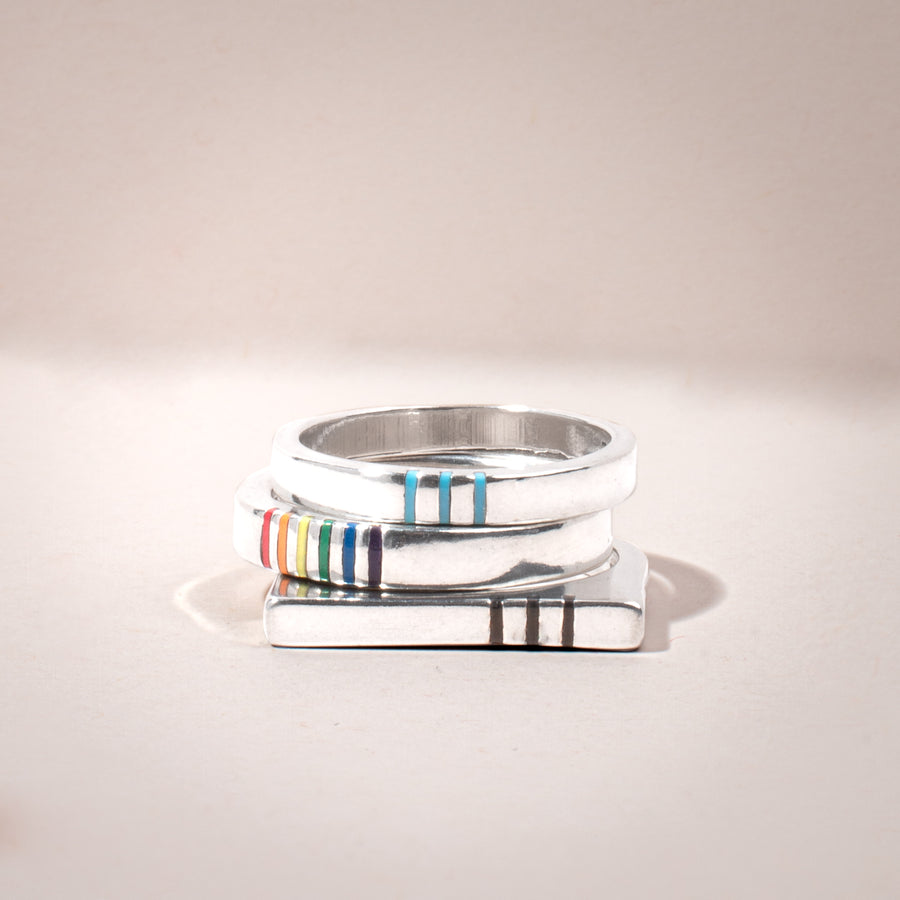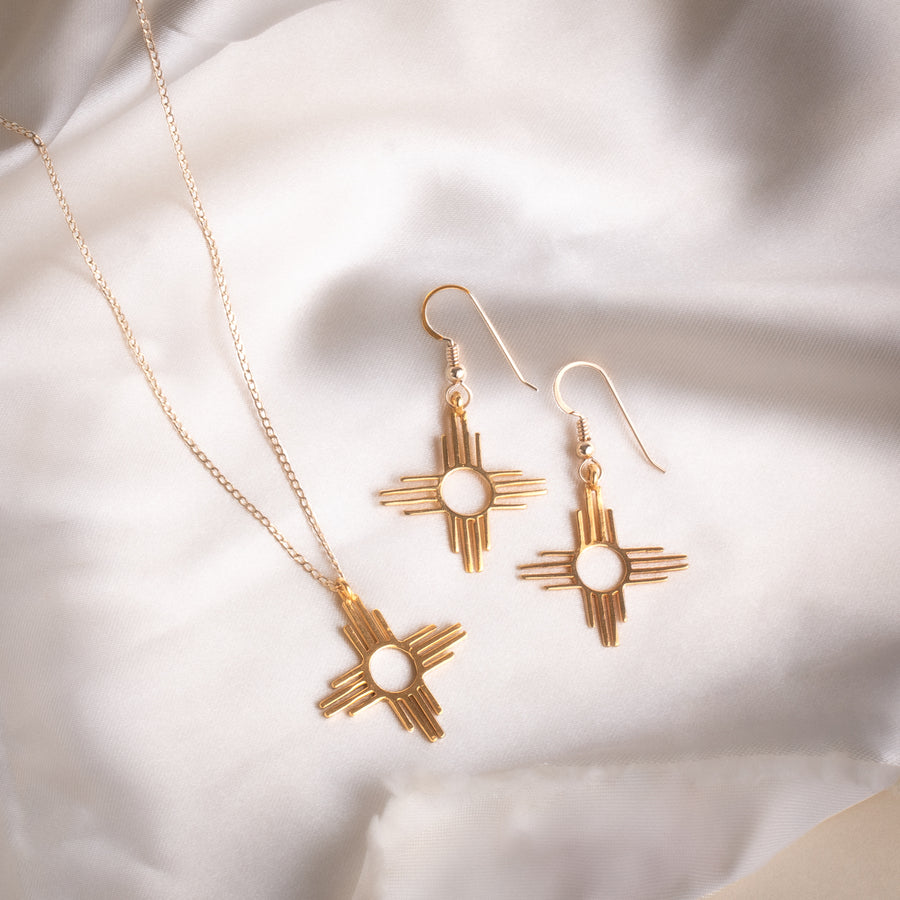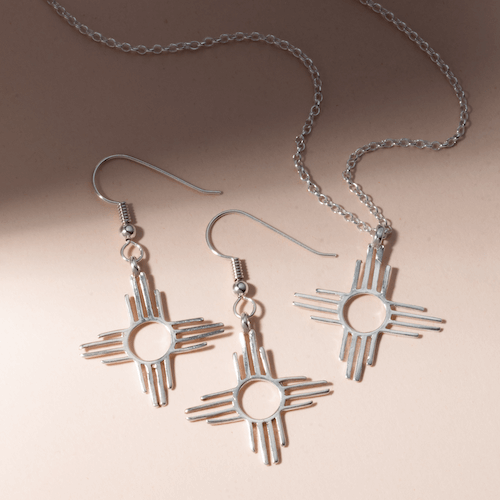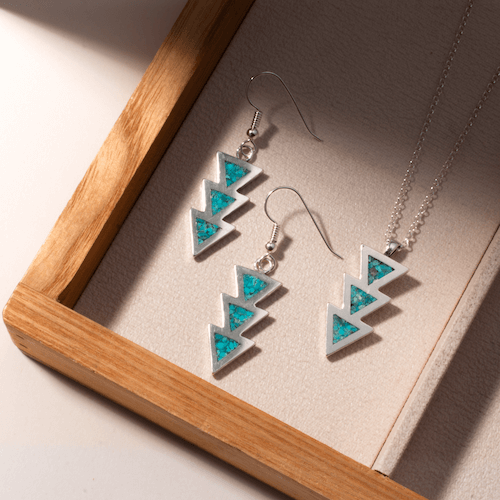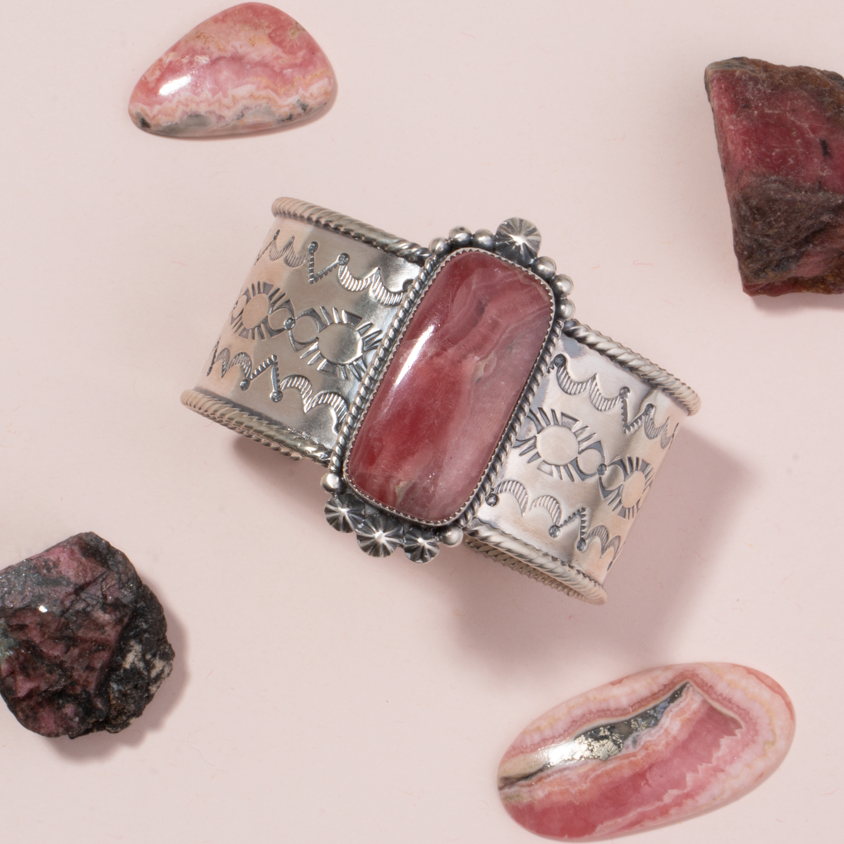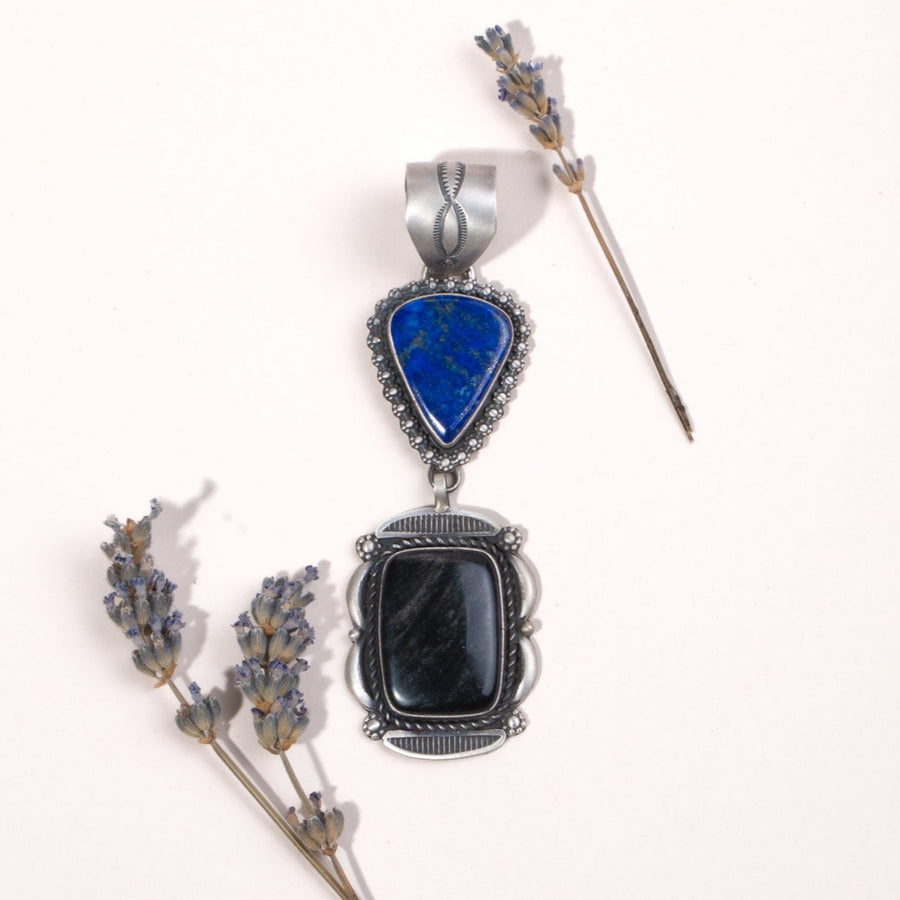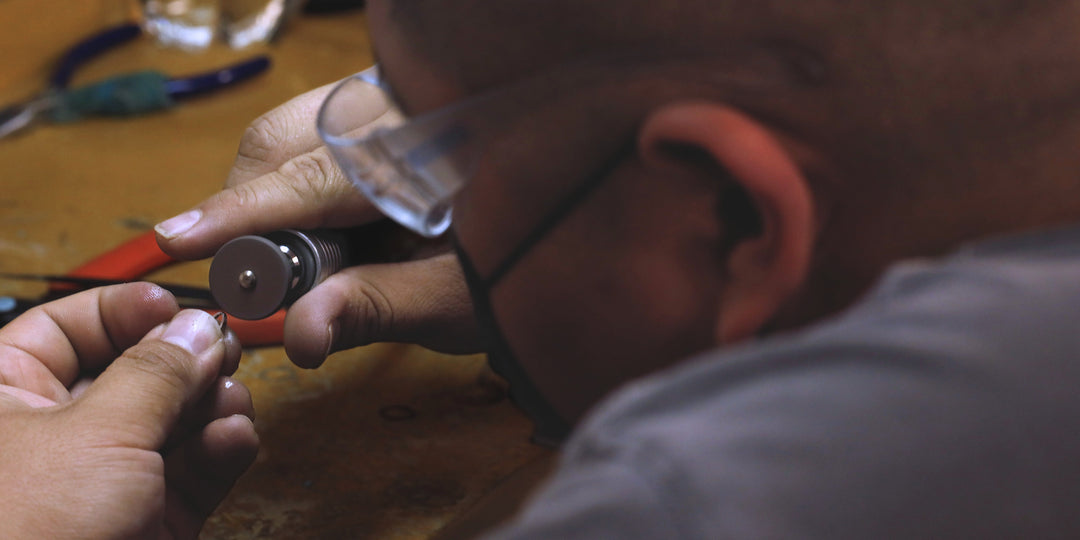Thunderbird Jewelry of Kewa Santo Domingo Pueblo
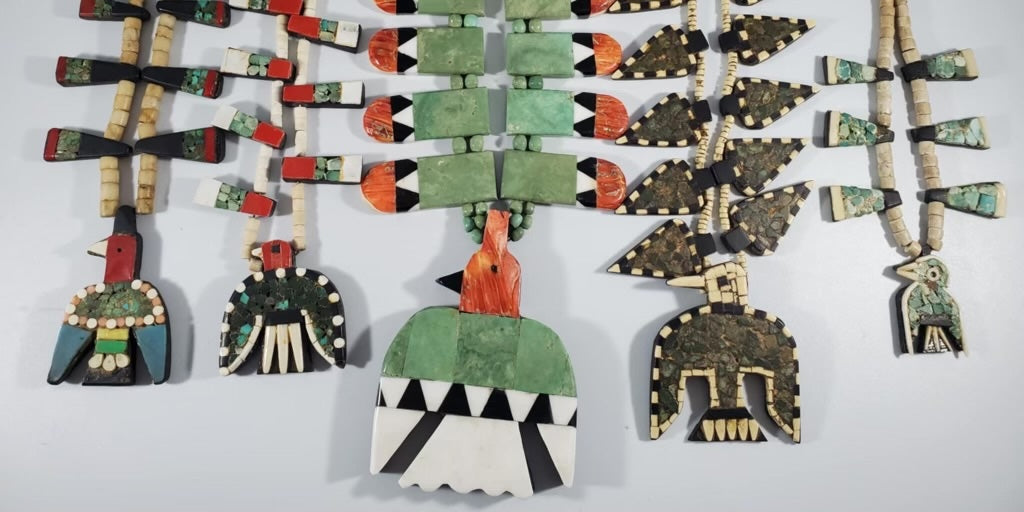
By Dustin Roberto
During the late 1920s, a special category of artwork was developed at Kewa Santo Domingo Pueblo known as Thunderbird jewelry. The techniques used to create these designs drew on traditional jewelry making methods which the community had long been renowned for. However, the use of creative materials such as plastic, gypsum, bone, and turquoise chips added an uncommon aspect to the jewelry. The innovative pieces of wearable art quickly gained attention from visiting tourists for whom the jewelry was created.
After becoming recognizable nearly one hundred years ago, Kewa Santo Domingo’s Thunderbird jewelry has become prized and historic, with its creation representing a significant event in New Mexico’s history. Today, examples are displayed in museums throughout New Mexico, recognizing their important backstory and lasting influence.
The remarkable use of materials such as Edison records, automobile batteries, household plastics, and turquoise chips to construct jewelry allowed artists to continue using their expert skills despite the scarcity of jewelry making supplies during the American Great Depression. It was during this time Thunderbird jewelry initially began to develop as a new style, known for the skillful use of substitution materials.

Gypsum and bone were used for handcrafting necklace beads, often strung on cotton thread and tied at the ends. Assorted types of plasticware were combined with turquoise fragments to construct pendants, tabs, and earrings of assorted shapes. Frequently, plastic was reused for this process from discarded automobile batteries. Plastic was also purchased for use from Woolworth’s stores in Albuquerque and Santa Fe. Over time, glass beads were used for stringing necklaces, and an impressive variety of pendants and earrings were crafted. Initially piñon sap was used as an adhesive, but it was later replaced by cement glue.
Thunderbird pendants and earrings were portrayed in a variety of ways, some displaying their wings up and others with wings at their side. Each Kewa Santo Domingo artist developed their own renditions of Thunderbird jewelry, with children sometimes helping their families with the creative process. The exact artist or time when turquoise, gypsum, and substitution materials were first used for this style of tourist jewelry is unclear. However, community members recall design influences from observing the fashion of visitors in the late 1920s and early 1930s. Additionally, artists note that military history contributed to the development of Thunderbird jewelry designs, referencing insignia and emblems found on uniforms.
In New Mexico, tourists arrived by train and car, who were interested in the masterful jewelry Kewa Santo Domingo artists are known for crafting. Many visitors arrived at the local trading post on the Pueblo hoping to acquire a Thunderbird necklace or pair of earrings as a memento of their trip. Little did they know, these souvenirs would eventually be recognized as a cherished part of Southwest history.

Appreciation for the jewelry began to spread as travelers returned home with their memorable purchases. Artists themselves began traveling by train across the Four Corners region to stock eager galleries with their creations. Originally sold for one or two dollars, today these artworks have become invaluable and hold a special place in the hearts of many.
Thunderbird jewelry grew popular among tourists due to its eye-catching designs and the amazing application of materials. Artists in the community did not have electricity until the 1960s, so these unique works of art were primarily created using hand tools. This practice became a tradition passed down through generations. Many antique Thunderbird designs remain in good condition today, thanks to the exceptional craftsmanship behind them.
In the 21st century, the story of Thunderbird jewelry continues with numerous contemporary artists who create their own works while incorporating aspects of historic designs. In fact, jewelry created by Kewa Santo Domingo artists is considered influential in today’s global fashion and entertainment industries. Kewa Santo Domingo artists continue to blend traditional techniques with contemporary styles, using their artistic talent to create work that is highly valued and continues to draw attention from around the world.
By acknowledging and celebrating the history of this incredible jewelry, future generations can learn about the artistic legacy of Kewa Santo Domingo Pueblo, which remains admired to this day.

